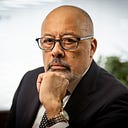Unmasking Deception: The Vital Role of Critical Thinking in DEI Progress
In today’s information-saturated world, distinguishing truth from deception can be a daunting task, especially when it comes to matters of diversity, equity, and inclusion (DEI). As misinformation and disinformation threaten to obstruct progress, the power of critical thinking emerges as a beacon of hope.
This article explores the crucial “why” of critical thinking and its pivotal role in driving transformative change within DEI initiatives. By addressing each aspect of critical thinking and providing illustrative examples, we shed light on its potential to counter negative outcomes and propel inclusive progress.
Questioning Assumptions
Critical thinkers do not accept information at face value. Instead, they engage in a process of inquisitive analysis. For instance, in a workplace diversity training, a critical thinker questions claims suggesting that hiring more women would harm productivity. They scrutinize the underlying assumptions, assess data credibility, and seek further evidence, ensuring informed decision-making.
Avoiding Confirmation Bias
Confirmation bias is a natural human tendency, but critical thinkers actively combat it. When encountering information that challenges their preconceived notions, they embrace the opportunity to reassess their beliefs. For example, a person challenging their preconceived beliefs about certain ethnic backgrounds in leadership roles when encountering a successful CEO from that same ethnic background.
Recognizing Manipulation
Misinformation often employs manipulative tactics to polarize communities. Critical thinkers have a keen eye for identifying such deception. For instance, when faced with a social media post blaming a minority group for rising crime rates, they investigate the source, seek credible data, and unveil the manipulative intent behind the post.
Promoting Inclusive Dialogue
Critical thinkers create spaces for respectful and open dialogue, particularly in DEI discussions. In a town hall meeting about education policies, a critical thinker ensures marginalized voices are heard and understood. By actively listening to their experiences and concerns, they foster an inclusive environment that nurtures diverse perspectives.
Facilitating Evidence-Based Solutions
A hallmark of critical thinking is reliance on evidence rather than unfounded claims. In a corporate setting, a critical thinker champions the implementation of diversity initiatives by presenting credible research on the advantages of diverse teams. This approach empowers data-driven decision-making, dismantling barriers to progress.
Challenging Power Structures
Critical thinkers question existing power structures that perpetuate discrimination and exclusion. In a political debate, a critical thinker challenges a candidate’s stance on immigration, highlighting the potential consequences of policies targeting marginalized communities disproportionately.
Conclusion
In the quest for genuine diversity, equity, and inclusion, critical thinking emerges as an indispensable tool. By actively questioning assumptions, avoiding confirmation bias, recognizing manipulation, promoting inclusive dialogue, embracing evidence-based solutions, and challenging power structures, we fortify our collective journey towards transformative change. Let us embrace the power of critical thinking to dispel misinformation, shatter barriers, and foster a more inclusive world for all.
Effenus Henderson
